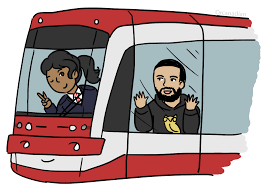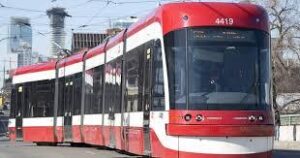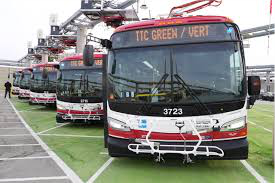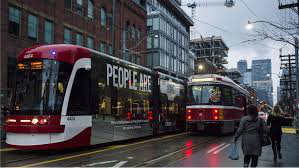 July 2024
July 2024
It has become clear that the world cannot handle so many automobiles.
Public transportation, one of the most immediate ways to reduce greenhouse gas emissions, is being embraced worldwide.
There has been a shift away from cars. Starting in 2024, New York City will try to reduce smog and traffic by charging private vehicles $9 to $23 to enter Manhattan’s central business district during peak hours. Funds will be used to improve the city’s subway system. London has had similar congestion pricing since 2003. Madrid banned polluting vehicles from most of the city years ago. Paris plans to ban most cars. In China, Beijing built 14 subway lines and 252 new stations between 2008 and 2016. Mexico City, Bogotá, and Quito all restrict cars from commuting on certain days according to license plate number.
 Public transportation is one of the most immediate ways to reduce greenhouse gas emissions. It is cleaner, cheaper and often faster. A single subway car holds hundreds of people and tens of thousands pass through a single subway station per hour. Private vehicles carry one or two people.
Public transportation is one of the most immediate ways to reduce greenhouse gas emissions. It is cleaner, cheaper and often faster. A single subway car holds hundreds of people and tens of thousands pass through a single subway station per hour. Private vehicles carry one or two people.
Toronto and much of the United States provides around half of its downtown surface areas to automobiles. In European cities, it is 20 percent to 30 percent.
Toronto’s approach thus far has not been to impose congestion charges or restrict cars from entering the city. The City is expanding and improving public transit while reclaiming some of the roadways once available for cars.
Nearly everyone in Toronto and the GTA has easy access to public transit at a fraction of the cost of owning and driving a car.
The key to this is efficient public transit. Toronto already has this and improvements are continuing. Depending on where you live there are larger buses, dedicated bus lanes or a subway station. New subway lines and dedicated bus lanes are being built. Fare collection is faster and easier. The City has added bike lanes, widened sidewalks and created outdoor eating areas where there used to be lanes dedicated to cars.
 Condominium buildings are going up near subway stations. New buildings are planned along new subway lines currently or soon to be under construction. All will likely have less space for parking cars than older buildings. More of those living in these buildings are expected to rely on public transit.
Condominium buildings are going up near subway stations. New buildings are planned along new subway lines currently or soon to be under construction. All will likely have less space for parking cars than older buildings. More of those living in these buildings are expected to rely on public transit.
It is getting harder and more expensive to drive a car into the city while public transit continues to improve.




